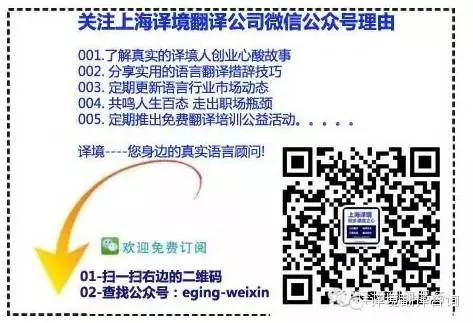Eging Solutions is one of the largest translation companies in Shanghai.Most of our translators graduated from prestigious universities at home and abroad, have years of experience in translation.
Having trained as a translator and worked in the translation industry for over 8 years in a variety of different roles, I’ve come across many myths about translators and the world of translation. If you work in the industry or are considering pursuing a career in translation, you will no doubt come across the following examples countless times:
1. If you speak a second language, you can be a translator
I think this is probably the most common misconception there is about translation. Most people do not realise that being able to speak another language does not mean you can translate. Translation is a skill that not everyone possesses, even if they are fluent in several languages.
To be a translator you need to be absolutely meticulous. You must have excellent writing skills and be a stickler for grammar and punctuation, as well as possessing exceptional knowledge of both the language you’re translating from (known as the source language) and the one you’re translating into (the target language). If you’re happy with your translation being simply “close enough” to the meaning of the original text, perhaps a career in translation is not for you…
2. If you can interpret then you can translate and vice versa
This is one of my favourites! As a trained translator, I’ve been asked to interpret numerous times and I’m often looked at in a confused manner when I politely decline the request. Translation and interpreting are very different and require two very different skillsets. Translators work with the written word, whilst an interpreter acts as the middleman between 2 or more parties who are communicating verbally. To be an interpreter requires excellent oral skills, speed of reaction and an ability to adapt immediately to speakers, situations and subjects. Whilst such skills would be useful to a translator, attention to detail and strong writing skills are essential.
3. Translators don’t actually need to understand what they’re translating
Would you ask a doctor to explain a legal document to you? Documents requiring translation are usually highly technical such as legal contracts, patents, financial reports, medical reports and marketing press releases. In order for a translator to be able to reproduce a document in the target language, they need to fully understand the original text word for word, as well as having a good understanding of the subject in question, in order to ensure that the meaning is conveyed accurately in the translation and that it is written in the appropriate style and language that its reader would expect.
4. Becoming a translator is an easy way to earn a lot of money
Yes, you can earn a good wage if you are a successful professional translator, but it’s certainly not an easy way to make money and you’re never going to be a millionaire. Being a translator often requires working long hours, often at very short notice, to meet tight deadlines, and if you want to be a freelancer then it will take a lot of time and effort to build up a regular client base. When starting out, you’ll need to put a lot of effort into marketing your services and ensuring you have the technology required to work as a professional translator, which can be expensive and will require updating regularly.
5. Translators are no longer needed, now there’s free online tools
It’s true that machine translation is becoming more and more sophisticated and there’s certainly a place in the translation industry for it, but what many people do not realise is that a machine will never be able to fully replace a human translator.
No machine will ever be able to fully understand and translate the subtleties of language and be able to successfully translate complex marketing and literary documents to the same level as a human translator. However sophisticated the technology may be – for any translation which is to be used for any purpose other than simply understanding the gist of the source document – we will always require human input.


